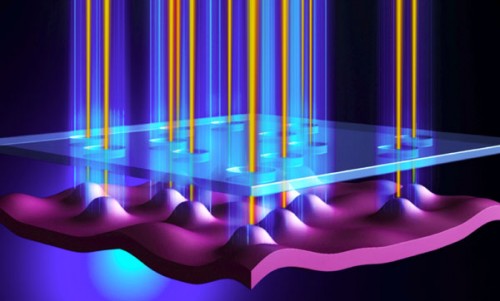
Artist’s impression of the single-photon source in action. (Courtesy: C Lu)
By Hamish Johnston
One requirement for many quantum-computing schemes is a device that can deliver a succession of single particles such as photons on demand. This has proven to be a challenge because in the quantum world probability reigns, so you can never be certain what will pop out of your device. Another challenging requirement is that these particles must be indistinguishable from each other.
Now, physicists in China, Germany and the UK say they have created the best single-photon source yet to be made from a system of quantum dots. You can read all about how the device delivers photons with “near-unity indistinguishability” in this article on our sister website nanotechweb.org.
Is possible to use such source of identical photons for slot experiment and confirm it?
Can quantum dots also produce indistiguishable polarized photons? Such photons bear two different quantum characteristic that can be used for quantum entanglement.